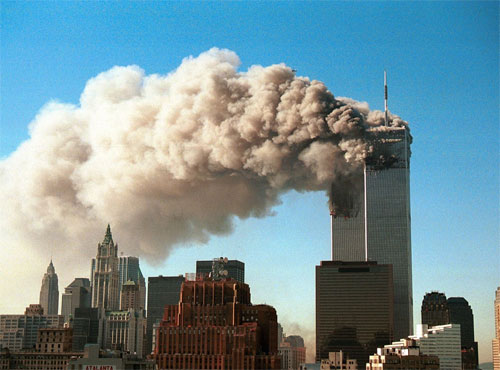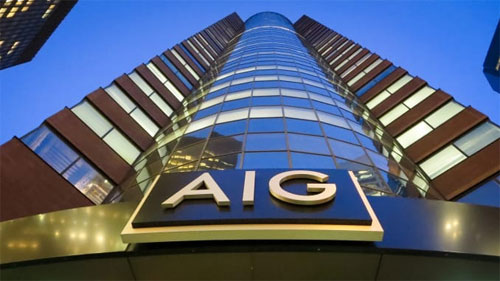Lockdowns, coronavirus, and banks: following the money (4)
Read the third part of the article
The events of 9/11 have sometimes been described as the basis of a global coup. To this day there is no genuine consensus about what really transpired to create the illusion of justification for repeated US military invasions of Muslim-majority countries in the Middle East and Eurasia.

The 9/11 debacle and the emergency measures that followed presented Wall Street with an array of new opportunities for profit that came with the elaborate refurbishing and retooling of the military-industrial complex.
The response to 9/11 was expanded and generalized upon to create the basis of a war directed not at a particular enemy, but rather at an ill-defined conception identified as “terrorism.” This alteration was part of a complex of changes adding trillions to the flow of money energizing the axis of interaction linking the Pentagon and Wall Street and the abundance of new companies created to advance the geopolitical objectives emerging from the 9/11 coup.
According to Pam Martens and Russ Martens, the excesses of deregulation helped induce an anything-goes-ethos on Wall Street and at its Federal Reserve regulator in the wake of 9/11. As the authors tell it, the response to 9/11 helped set important precedents for the maintaining flows of credit and capital in financial markets.
Often the destination of the funds generated in the name of pumping liquidity into markets was not identified and reported in transactions classified as financial emergency measures. While the priority was on keeping financial pumps primed, there was much less concern for transparency and accountability among those in positions of power at the Federal Reserve.
The financial sector’s capture of the government instruments meant to regulate the behaviour of Wall Street institutions was much like the deregulation of the US pharmaceutical industry. Both episodes highlight a message that has become especially insistent as the twenty-first century unfolds.
The nature of the response to 9/11 emphasized the mercenary ascent of corporate dominance as the primary force directing governments. Throughout this transformation the message to citizens became increasingly clear. Buyer Beware. We cannot depend on governments to represent our will and interests. We cannot even count on our governments to protect citizens from corporatist attacks especially on human health and whatever financial security we have been able to build up.
Bailouts, derivatives, and the Federal Reserve Bank of New York
The elimination of the Glass-Steagall Act in 1999 was essential to the process of dramatically cutting back the government’s role as a protector of the public interest on the financial services sector. The Glass-Steagall Act was an essential measure in US President Franklin D. Roosevelt’s New Deal. Some view the New Deal as a strategy for saving capitalism by moderating its most sharp-edged features. Instituted in 1933 in response to the onset of the Great Depression, the Glass-Steagall Act separated the operations of deposit-accepting banks from the more speculative activity of investment brokers.
The termination of the regulatory framework put in place by the Glass-Steagall Act opened much new space for all kinds of experiments in the manipulation of money in financial markets. The changes began with the merger of different sorts of financial institutions including some in the insurance field. Those overseeing the reconstituted entities headquartered on Wall Street took advantage of their widened latitudes of operation. They developed all sorts of ways of elaborating their financial services and presenting them in new packages.
The word, “derivative” is often associated with many applications of the new possibilities in the reconstituted financial services sector. The word, derivative, can be applied to many kinds of transactions involving speculative bets of various sorts. As the word suggests, a derivative is derived from a fixed asset such as currency, bonds, stocks, and commodities. Alterations in the values of fixed assets affect the value of derivatives that often take the form of contracts between two or more parties.
One of the most famous derivatives in the era of the financial crash of 2007-2010 was described as mortgaged-backed securities. On the surface these bundles of debt-burdened properties might seem easy to understand. But that would be a delusion. The value of these products was affected, for instance, by unpredictable shifts in interest rates, liar loans extended to homebuyers who lacked the capacity to make regular mortgage payments, and significant shifts in the value of real estate.
Mortgage-backed securities were just one type of a huge array of derivatives invented on the run in the heady atmosphere of secret and unregulated transactions between counterparties. Derivatives could involve contracts formalizing bets between rivals gambling on the outcome of competitive efforts to shape the future. An array of derivative bets was built around transactions often placed behind the veil of esoteric nomenclature like “collateralized debt obligations” or “credit default swaps.”

The variables in derivative bets might include competing national security agendas involving, for instance, pipeline constructions, regime change, weapons development and sales, false flag terror events, or money laundering. Since derivative bets involve confidential transactions with secret outcomes, they can be derived from all sorts of criteria. Derivative bets can, for instance, involve all manner of computerized calculations that in some cases are constructed much like war game scenarios.
The complexity of derivatives became greater when the American Insurance Group, AIG, began selling insurance programs to protect all sides in derivative bets from suffering too drastically from the consequences of being on the losing side of transactions.
The derivative frenzy, sometimes involving bets being made by parties unable to cover potential losses, overwhelmed the scale of the day-to-day economy. The “real economy” embodies exchanges of goods, services, wages and such that supply the basic necessities for human survival with some margin for recreation, travel, cultural engagement and such.
The Swiss-based Bank of International Settlements calculated in 2008 that the size of the all forms of derivative products had a monetary value of $1.14 quadrillion. A quadrillion is a thousand trillions. By comparison, the estimated value of all the real estate in the world was $75 trillion in 2008. [Bank for International Settlements, Semiannual OTC derivative statistics at end-December, 2008.]
As the enticements of derivative betting preoccupied the leading directors of Wall Street institutions, their more traditional way of relating to one another began to falter. It was in this atmosphere that the Repo Market became problematic in December of 2007 just as it showed similar signs of breakdown in September of 2019.
In both instances the level of distrust between those in charge of financial institutions began to falter because they all had good reason to believe that their fellow bankers were overextended. All had reason to believe their counterparts were mired by too much speculative activity enabled by all sorts of novel experiments including various forms of derivative dealing.
In December of 2007 as in the autumn of 2019, the Federal Reserve Bank of New York was forced to enter the picture to keep the financial pumps on Wall Street primed. The New York Fed kept the liquidity cycles flowing by invoking its power to create new money with the interest charged to tax payers.
As the financial crisis unfolded in 2008 and 2009 the Federal Reserve, but especially the privately-owned New York Federal Reserve bank, stepped forward to bail out many financial institutions that had become insolvent or near insolvent. In the process precedents and patterns were established that are being re-enacted with some modifications in 2020.
One of the innovations that took place in 2008 was the decision by the Federal Reserve Bank of New York to hire a large Wall Street financial institution, BlackRock, to administer the bailouts. These transfers of money went through three specially created companies now being replicated as Special Purpose Vehicles in the course of the payouts of 2020. In 2008-09 BlackRock administered the three companies named after the address of the New York Federal Reserve Bank on Maiden Lane. BlackRock emerged from an older Wall Street firm called Blackstone. Its former chair, Peter C. Peterson, was a former Chair of the Federal Reserve Bank of New York.
The original Maiden Lane company paid Bear Stearns Corp $30 billion. This amount from the New York Fed covered the debt of Bear Stearns, a condition negotiated to clear the way for the purchase of the old Wall Street institution by JP Morgan Chase. Maiden Lane II was a vehicle for payouts to companies that had purchased “mortgage-backed securities” before these derivative products turned soar.
Maiden Lane III was to pay off “multi-sector collateralized debt obligations.” Among these bailouts were payoffs to the counterparties of the insurance giant, AIG. As noted, AIG had developed an insurance product to be sold to those engaged in derivative bets. When the bottom fell out of markets, AIG lacked the means to pay off the large number of insurance claims made against it. The Federal Reserve Bank of New York stepped in to bail out the counterparties of AIG, many of them deemed to be “too big to fail.”

Among the counterparties of AIG was Goldman Sachs. It received of $13 billion from the Federal Reserve. Other bailouts to AIG’s counterparties were $12 billion to Deutsche Bank, $6.8 billion to Merrill Lynch, $5 billion to Switzerland’s UBS, $7.9 billion to Barclays, and $5.2 billion to Bank of America. Some of these banks received additional funds from other parts of the overall bailout transaction. Many dozens of other counterparties to AIG also received payouts in 2008-2009. Among them were the Bank of Montreal and Bank of Scotland.
The entire amount of the bailouts was subsequently calculated to be a whopping $29 trillion with a “t.” The lion’s share of these funds went to prop up US financial institutions and the many foreign banks with which they conducted business.
Much of this money went to the firms that were shareholders in the Federal Reserve Bank of New York or partners of the big Wall Street firms. Citigroup, the recipient of the largest amount, received about $2.5 trillion in the federal bailouts. Merrill Lynch received $2 trillion.
The Federal Reserve Bank was established by Congressional statute in 1913. The Federal Reserve headquarters is situated in Washington DC. The Central Bank was composed of twelve constituent regional banks. Each one of these regional banks is owned by private banks.
The private ownership of the banks that are the proprietors of the Federal Reserve system has been highly contentious from its inception. The creation of the Federal Reserve continues to be perceived by many of its critics as an unjustifiable giveaway whereby the US government ceded to private interests its vital capacity to issue its own currency and to direct monetary policy like the setting of interest rates.
Pam Martens and Russ Martens at Wall Street on Parade explain the controversial Federal Reserve structure as follows “While the Federal Reserve Board of Governors in Washington, D.C. is deemed an ‘independent federal agency,’ with its Chair and Governors appointed by the President and confirmed by the Senate, the 12 regional Fed banks are private corporations owned by the member banks in their region. The settled law under John L. Lewis v. the United States confirms: ‘Each Federal Reserve Bank is a separate corporation owned by commercial banks in its region.’”
“In the case of the New York Fed, which is located in the Wall Street area of Manhattan, its largest shareowners are behemoth multinational banks, including JPMorgan Chase, Citigroup, Goldman Sachs and Morgan Stanley.”
There was no genuine effort after the financial debacle of 2007-2010 to correct the main structural problems and weaknesses of the Wall Street-based US financial sector. The Dodd-Frank Bill signed into law by US President Barack Obama in 2010 did make some cosmetic changes. But the main features of the regulatory capture that has taken place with the elimination of the Glass-Steagall Act remained with only minor alterations. In particular the framework was held in place for speculative excess in derivative bets.
In the summer edition of The Atlantic, Frank Partnoy outlined a gloomy assessment of the continuity leading from the events of 2007-2010 to the current situation. This current situation draws a strange contrast between the lockdown-shattered quality of the economy and the propped-up value of the stock market whose future value will in all probability prove unsustainable. Partnoy writes, “It is a distasteful fact that the present situation is so dire in part because the banks fell right back into bad behavior after the last crash – taking too many risks, hiding debt in complex instruments and off-balance-sheet entities, and generally exploiting loopholes in laws intended to rein in their greed. Sparing them for a second time this century will be that much harder.”
Wall Street criminality on display
The frauds and felonies of the Wall Street banks have continued after the future earnings of US taxpayers returned them to solvency after 2010. The record of infamy is comparable to that of the pharmaceutical industry.
The criminal behaviour in both sectors is very relevant to the overlapping crises that are underway in both the public health and financial sectors. In 2012 the crime spree in the financial sector began with astounding revelations.
yogaesoteric
November 15, 2020
